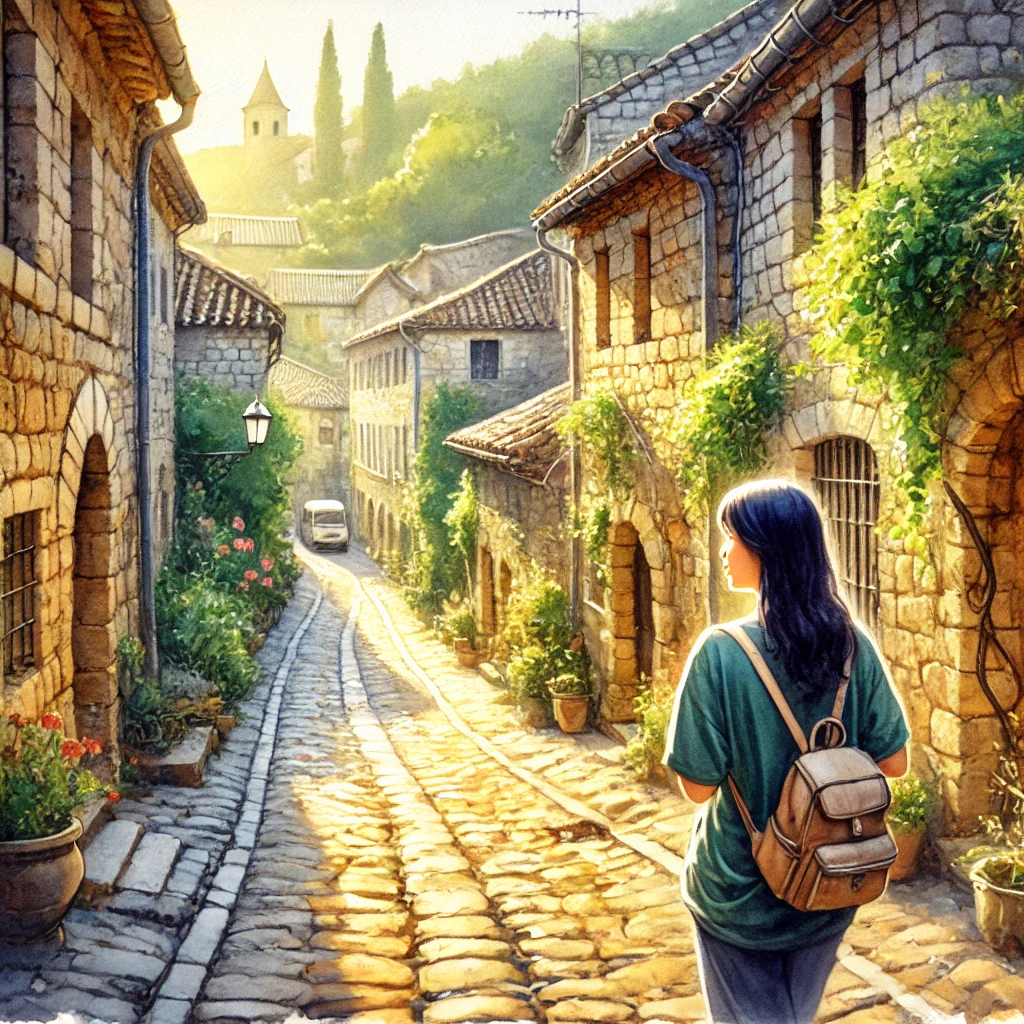ChatGPT:Caserta is a city in the Campania region of southern Italy, renowned for its grand royal palace, the Reggia di Caserta. This UNESCO World Heritage site, often compared to the Palace of Versailles, features expansive gardens, stunning architecture, and luxurious interiors. Caserta also boasts rich history, with sites like the medieval Old Town, the 11th-century Casertavecchia village, and the San Leucio complex, known for its historic silk production. The city offers a blend of cultural heritage, architectural splendor, and scenic beauty.
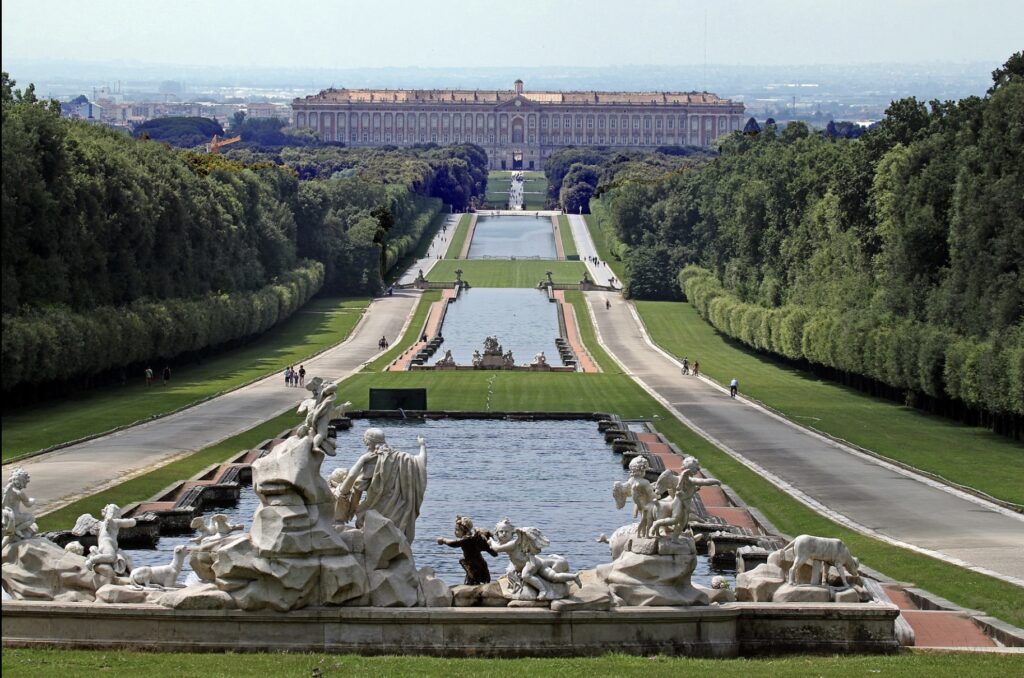
Caserta’s origins trace back to ancient times, with its name possibly derived from “Casa Hirta,” meaning “a place of strength” in Latin. The city’s history is deeply intertwined with its strategic location and the development of its iconic landmarks.
Ancient and Medieval Periods
- Pre-Roman and Roman Era: The area around Caserta was inhabited by ancient Italic tribes before becoming part of the Roman Empire. During the Roman period, it was a relatively minor settlement.
- Medieval Period: Caserta’s significance grew during the medieval era, particularly with the development of Casertavecchia, an older medieval village located on a hill. Casertavecchia flourished under Lombard, Norman, and later Angevin control, serving as a fortified stronghold.
Early Modern Period
- 16th-17th Centuries: In the early modern period, Caserta remained a modestly populated area, overshadowed by larger neighboring cities. However, it began to gain prominence due to its strategic location and fertile lands.
18th Century and the Bourbon Influence
- The Royal Palace: The turning point in Caserta’s history came in the mid-18th century when Charles VII of Naples (later Charles III of Spain) commissioned the construction of the Royal Palace of Caserta (Reggia di Caserta). Designed by architect Luigi Vanvitelli, the palace was intended to rival Versailles and serve as the administrative center of the Kingdom of Naples. Its construction significantly boosted Caserta’s development, attracting workers, artisans, and nobility to the area.
19th Century to Present
- Napoleonic Era: During the early 19th century, Caserta, like much of Italy, experienced the upheaval of the Napoleonic Wars. The palace and the region were affected by various political changes, including the short-lived Parthenopean Republic and subsequent restoration of Bourbon rule.
- Unification of Italy: The unification of Italy in the mid-19th century brought further changes. Caserta became part of the newly unified Kingdom of Italy, and its strategic importance continued to grow, particularly due to its proximity to Naples and major transportation routes.
- 20th Century: Throughout the 20th century, Caserta evolved into a modern urban center. The area surrounding the palace developed into a bustling city, while preserving its historical and architectural heritage. The Royal Palace became a major tourist attraction, contributing to the local economy.
- World War II: Caserta played a role during World War II, serving as a headquarters for the Allied forces in Italy. The signing of the unconditional surrender of German forces in Italy took place at the Royal Palace in April 1945.
Contemporary Caserta
Today, Caserta is a vibrant city blending historical significance with modern development. The Royal Palace of Caserta remains its most famous landmark, drawing visitors from around the world. The city also hosts cultural events, educational institutions, and a diverse community, making it an important cultural and economic hub in the Campania region.
The Royal Palace of Caserta (Reggia di Caserta) is one of Italy’s most magnificent and expansive palaces, designed by the renowned architect Luigi Vanvitelli for Charles VII of Naples. Completed in 1780, it was intended to rival the grandeur of Versailles and serve as the administrative and residential center of the Bourbon monarchy. Here are the key features, special rooms, and surroundings of this architectural masterpiece:
Palace Features
- Facade: The palace features a grand, symmetrical facade with Baroque and Neoclassical elements. Its impressive length spans over 247 meters, creating a striking visual impact.
- Atrium: Visitors enter through a large, ornate atrium that sets the tone for the opulence within. The atrium leads to the main staircase, an architectural marvel.
Special Rooms and Interiors
- The Grand Staircase: Known as the “Scalone d’Onore,” this monumental staircase is one of the palace’s most famous features. It leads from the atrium to the royal apartments on the upper floors and is celebrated for its elegant design and marble construction.
- The Throne Room: This grand room was used for official ceremonies and receptions. It features a high ceiling adorned with intricate frescoes, chandeliers, and richly decorated walls with gold accents.
- The Palatine Chapel: Inspired by the Palatine Chapel in the Palace of Versailles, this chapel is a smaller yet equally exquisite place of worship. It is adorned with beautiful frescoes, marble columns, and intricate stucco work.
- The Royal Apartments: These rooms were the private living quarters of the royal family. They are decorated with lavish furnishings, tapestries, and artworks. Notable rooms include the King’s Bedroom, the Queen’s Apartments, and various salons used for entertainment and relaxation.
- The Library: This room houses an extensive collection of books and manuscripts, reflecting the intellectual interests of the Bourbon monarchy. The library is elegantly designed, with wooden shelves and detailed ceiling frescoes.
- The Hall of Mirrors: Similar to its namesake in Versailles, this hall features large mirrors that enhance the sense of space and light. It was used for balls and other grand events.
Gardens and Surroundings
- The Park: The palace is surrounded by an extensive park, covering over 120 hectares. The park is designed in both the Italian and French garden styles, with manicured lawns, ornate fountains, and carefully planned vistas.
- The Great Waterfall: A series of cascades and fountains lead up to the Great Waterfall, a dramatic water feature that culminates in a large basin. Statues and sculptures, including classical deities and mythological figures, adorn the area around the waterfall.
- The English Garden: This section of the park was designed in the English style, characterized by its naturalistic layout, winding paths, and picturesque landscapes. It includes exotic plants, ornamental lakes, and small architectural follies.
- The Aqueduct: The Carolino Aqueduct, constructed to supply water to the palace and its gardens, is an engineering marvel. It includes a series of bridges and tunnels that bring water from the nearby hills to the palace grounds.
- The Old Wood: This wooded area within the park provides a more rustic and shaded environment, contrasting with the formal gardens. It includes walking paths and small clearings, offering a serene retreat.
The Royal Palace of Caserta stands as a testament to the grandeur of the Bourbon monarchy and remains a symbol of Italy’s rich cultural and architectural heritage.
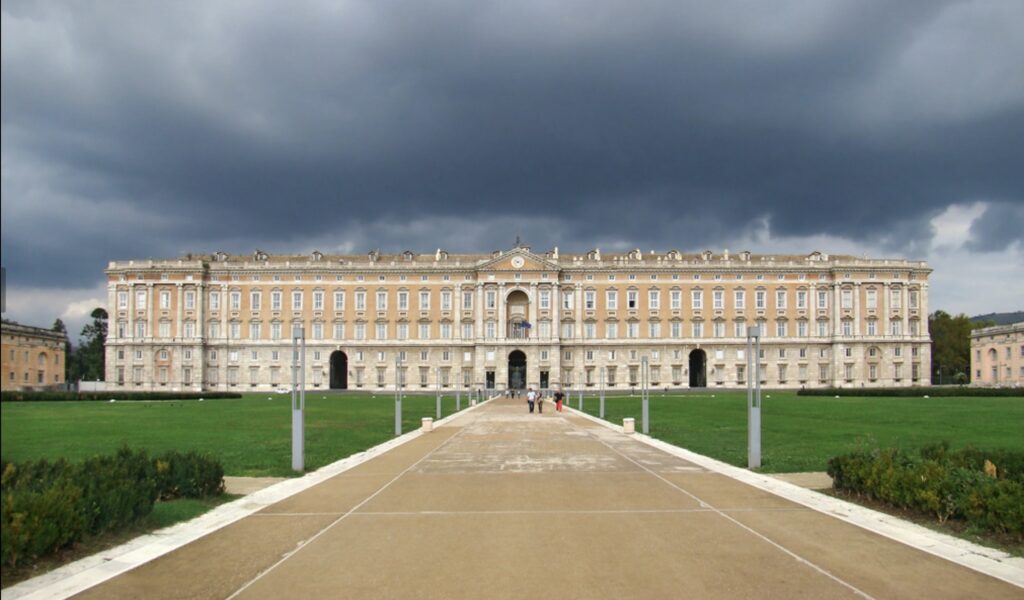
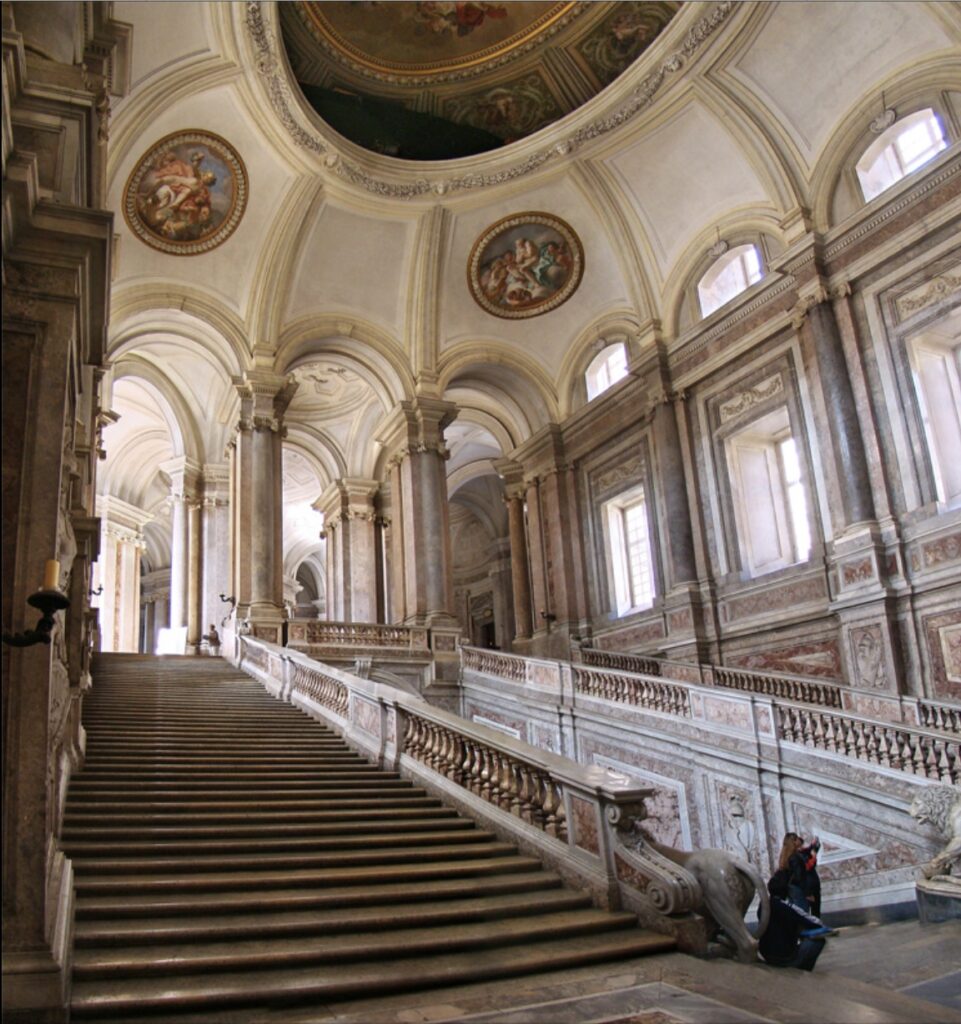
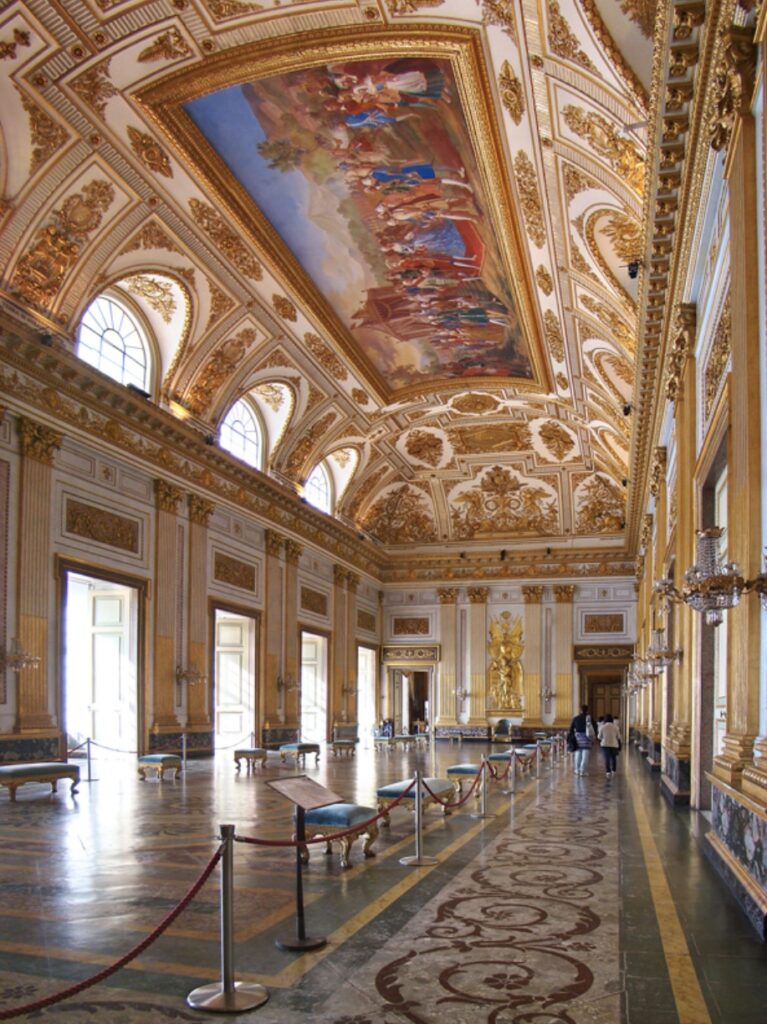
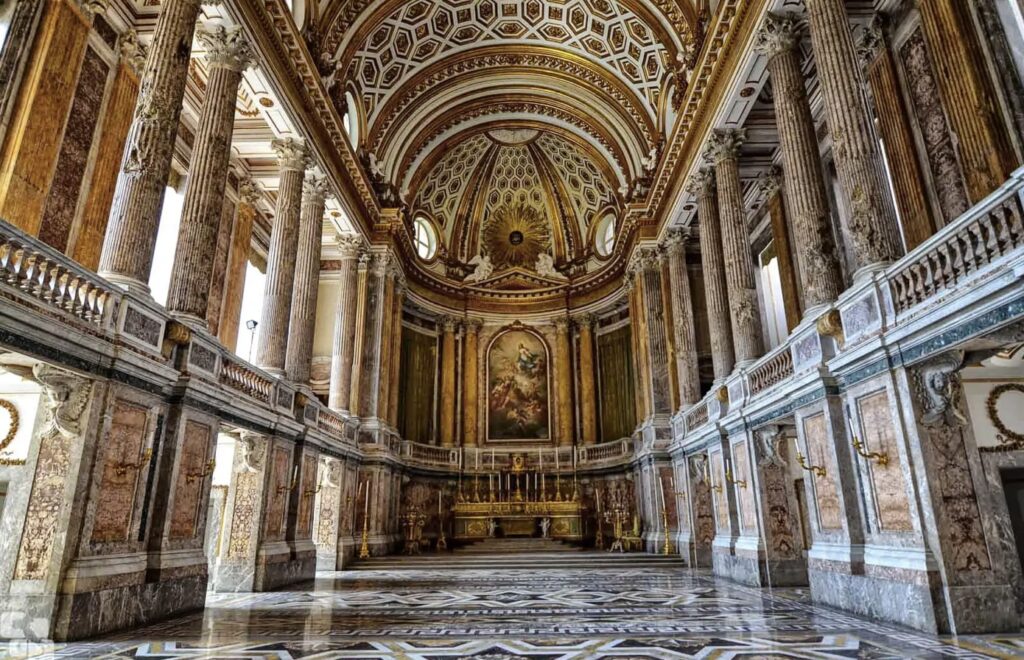
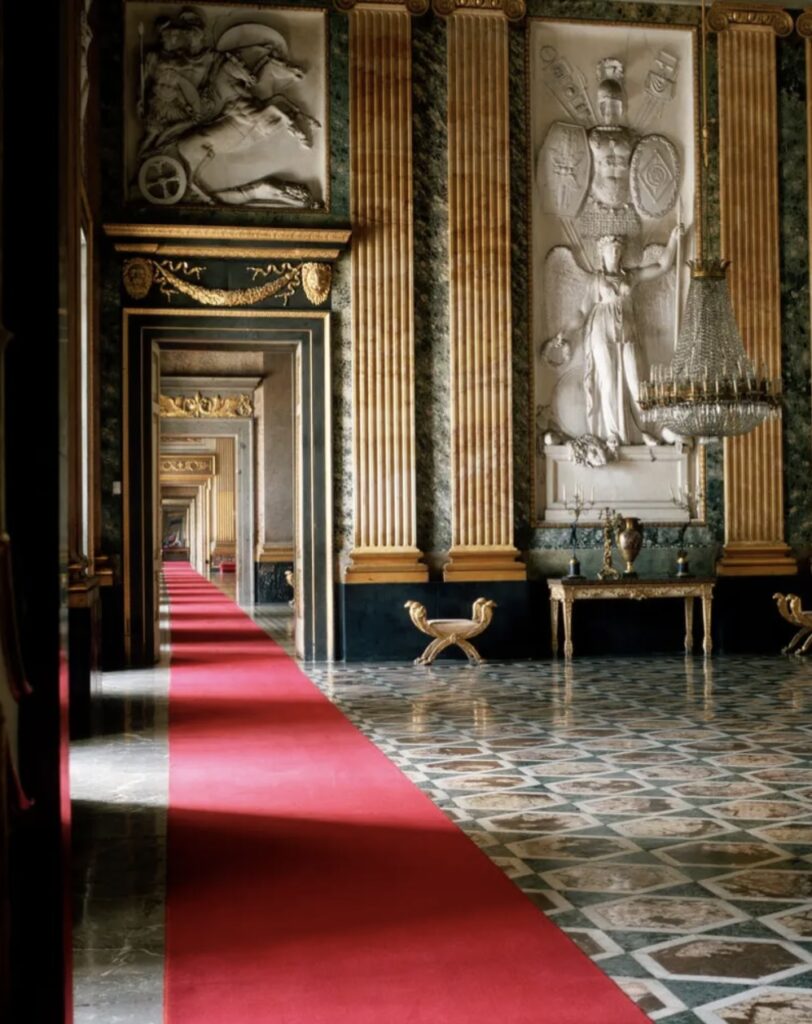
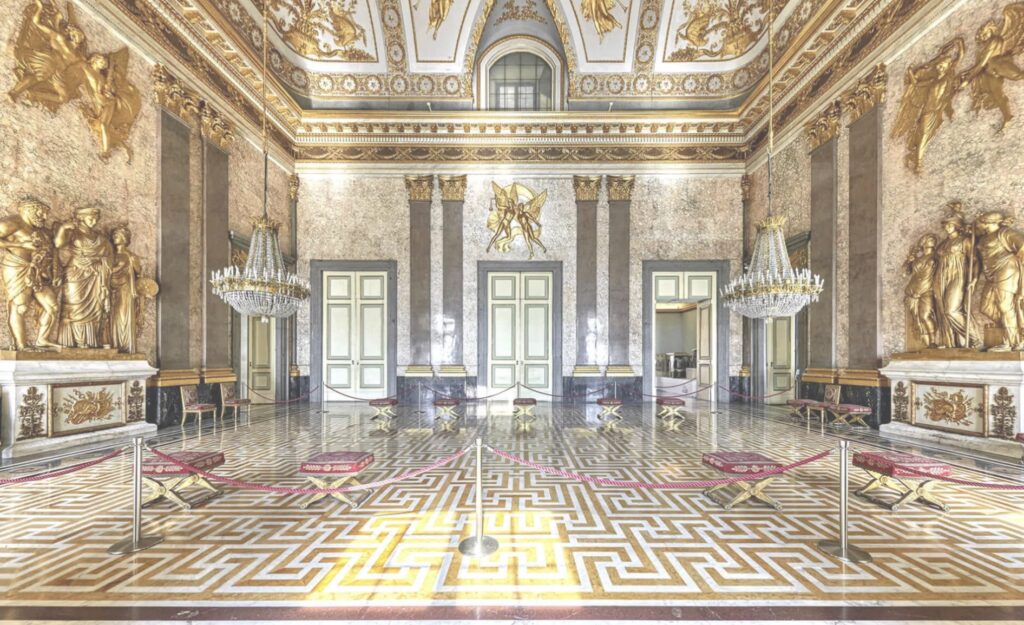
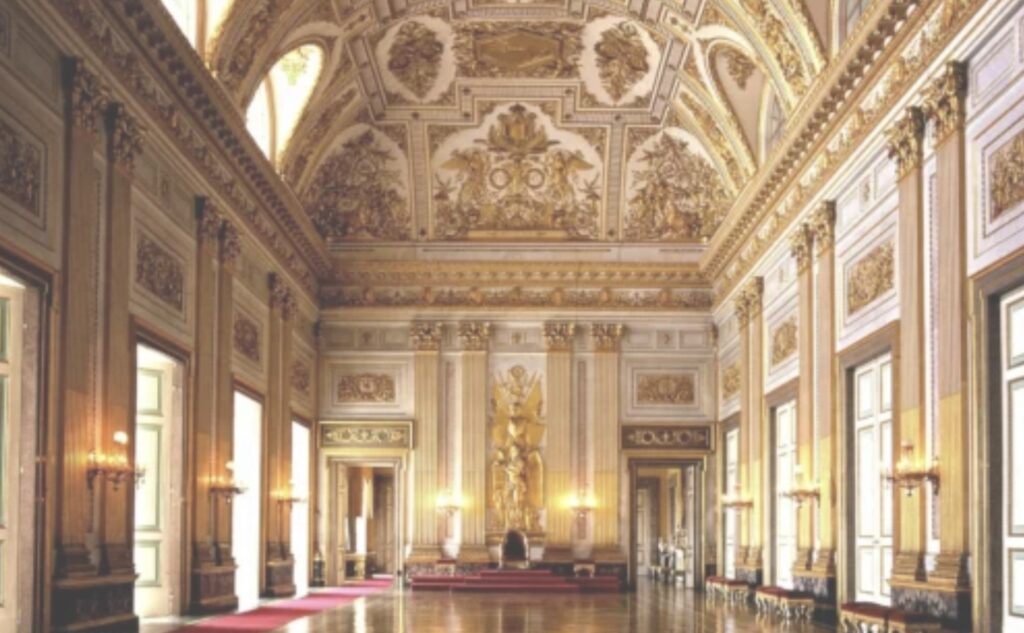
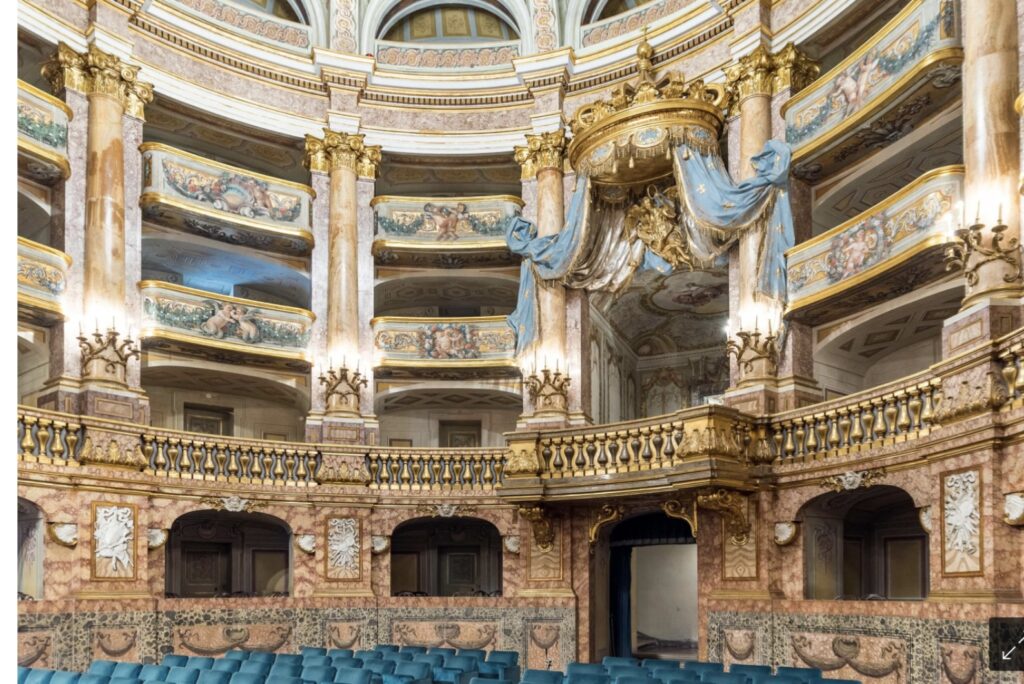
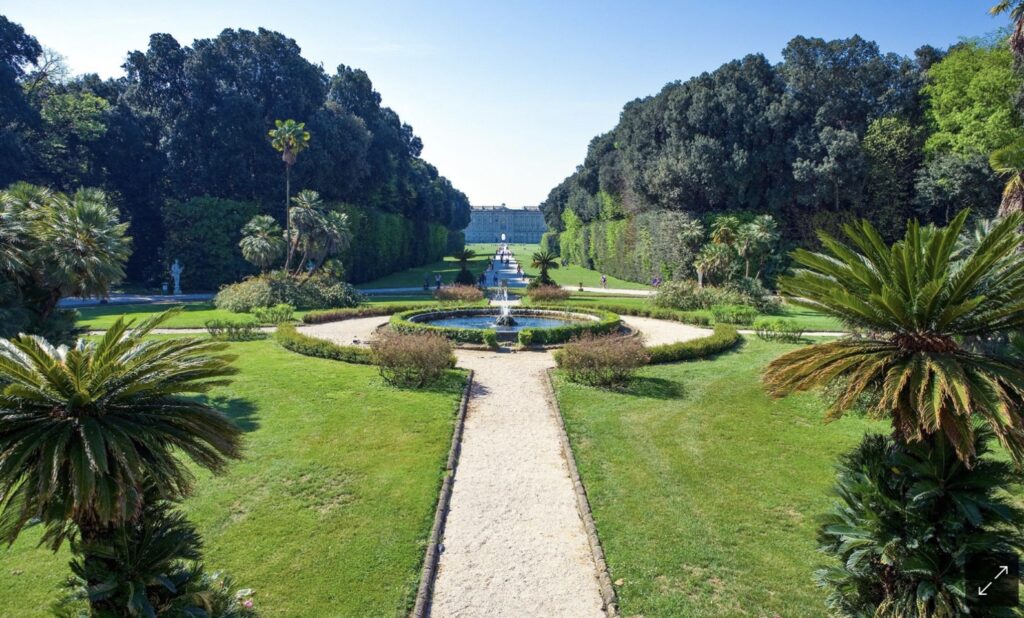
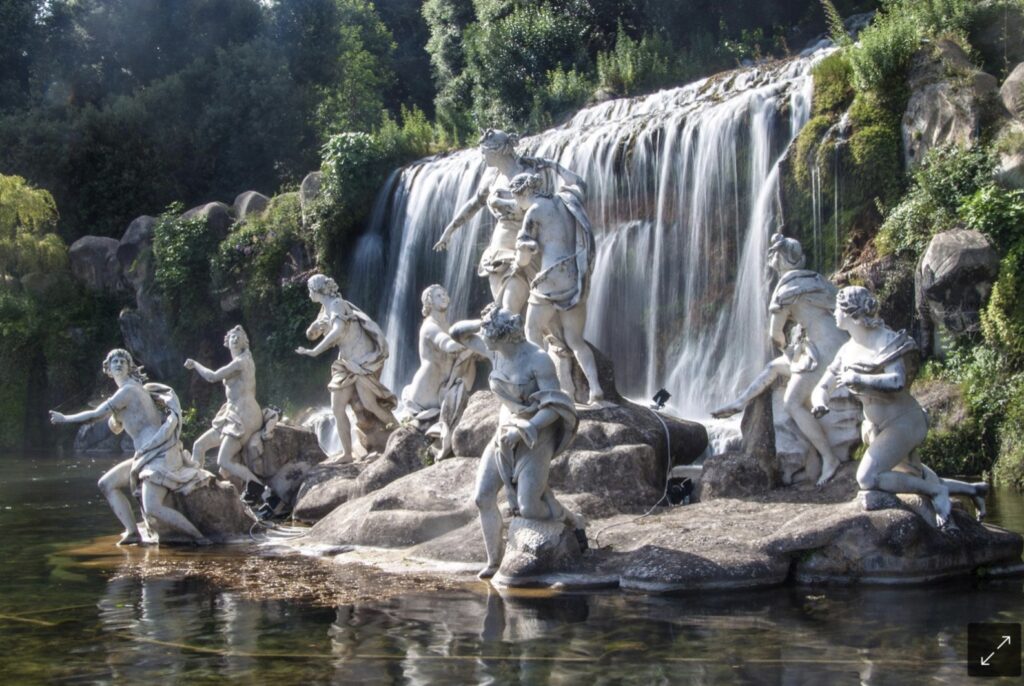
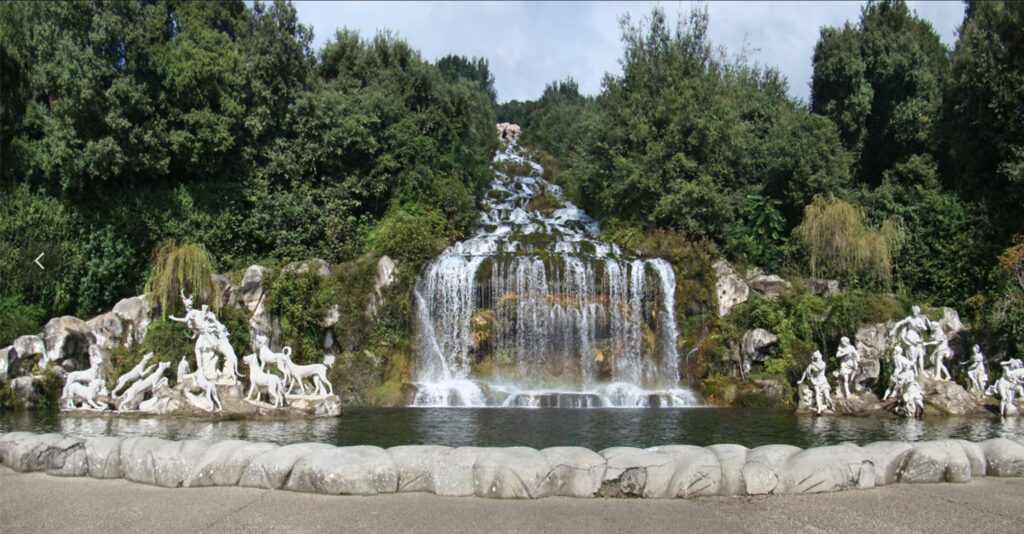
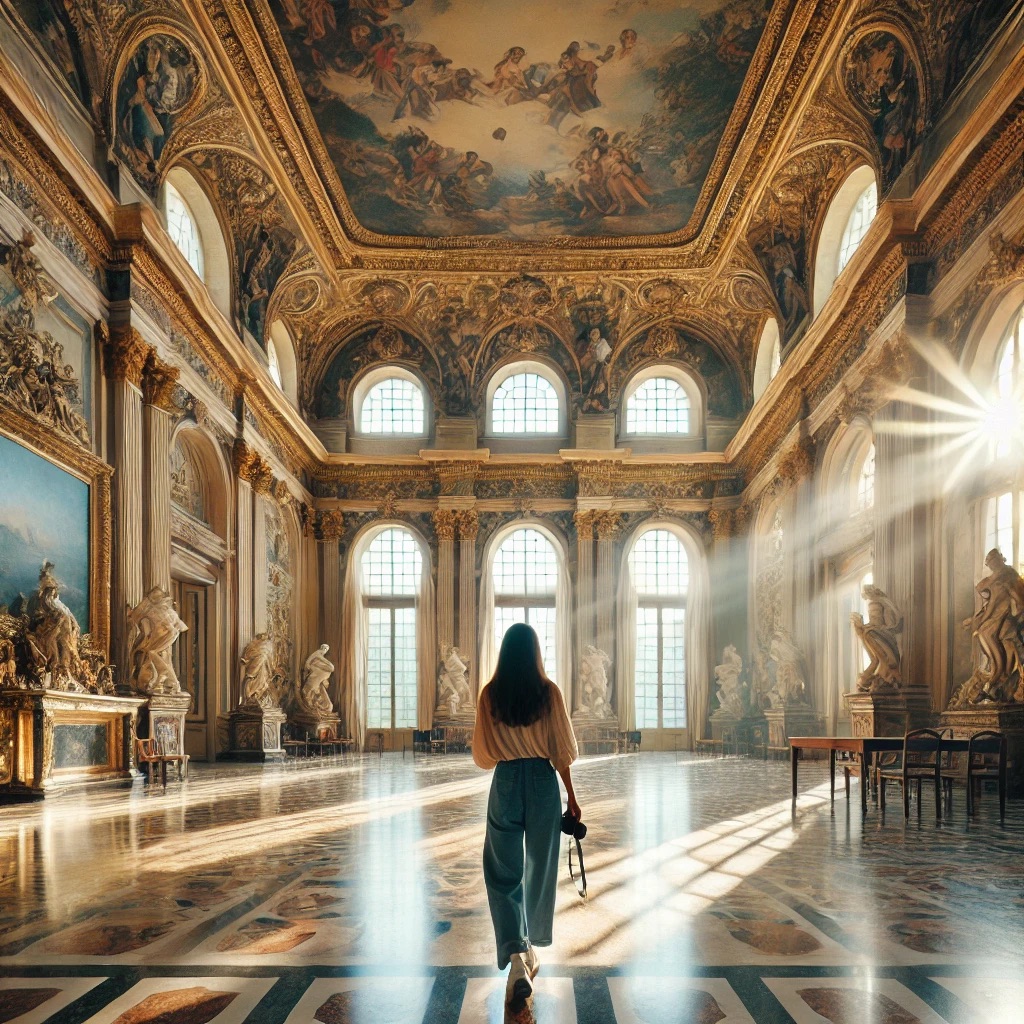
Casertavecchia, a charming medieval village located on a hill overlooking the modern city of Caserta, is rich in historical monuments and tourist attractions. Here are some of the notable sites:
Historical Monuments
- Cathedral of San Michele Arcangelo: This Romanesque-Gothic cathedral, built in the 12th century, is the most prominent monument in Casertavecchia. It features a beautiful façade, a bell tower, and an interior adorned with medieval frescoes and sculptures.
- Castello di Casertavecchia: The ruins of the medieval castle, dating back to the Lombard period, offer a glimpse into the village’s defensive past. The castle’s strategic position provides panoramic views of the surrounding area.
- Church of Annunziata: This small church, also from the 12th century, is known for its simple yet elegant architecture. It often hosts cultural events and exhibitions.
- Bell Tower: Adjacent to the cathedral, the bell tower is a notable structure with its distinct Romanesque design. It offers a striking vertical element to the village’s skyline.
Tourist Attractions
- Medieval Streets: Walking through the narrow, winding streets of Casertavecchia is like stepping back in time. The cobblestone paths, ancient houses, and charming squares create a picturesque setting.
- Piazza Vescovado: This central square is the heart of the village, where visitors can enjoy the ambiance, visit local cafes and restaurants, and take in the historic surroundings.
- Panoramic Views: Casertavecchia offers stunning views of the Campania plain and the modern city of Caserta below. Several viewpoints around the village provide ideal spots for photography and relaxation.
- Local Craft Shops: The village is home to various artisan shops where visitors can purchase locally made crafts, souvenirs, and traditional products.
- Cultural Events: Casertavecchia hosts several cultural events throughout the year, including medieval festivals, music concerts, and historical reenactments, which add to its vibrant atmosphere.
- Historical Interpretation Centers: These centers provide information about the history and significance of Casertavecchia, offering visitors deeper insights into its past.
- Restaurants and Cafes: There are several dining options where visitors can enjoy local cuisine, often with spectacular views of the surrounding countryside.
Casertavecchia’s blend of historical monuments, charming streets, and cultural activities makes it a must-visit destination for those exploring the Caserta region.
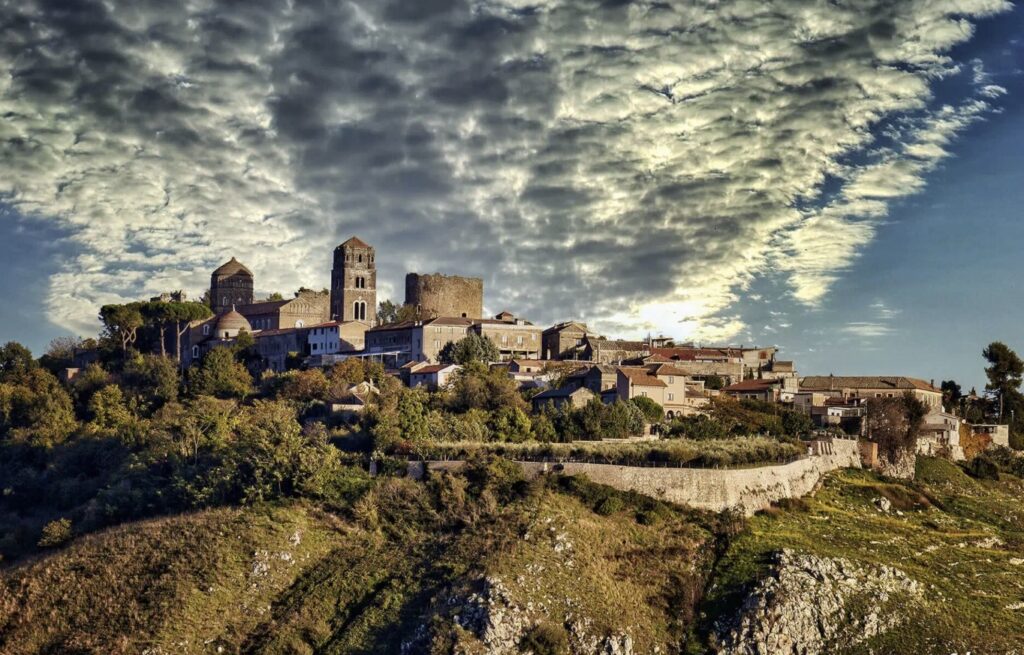
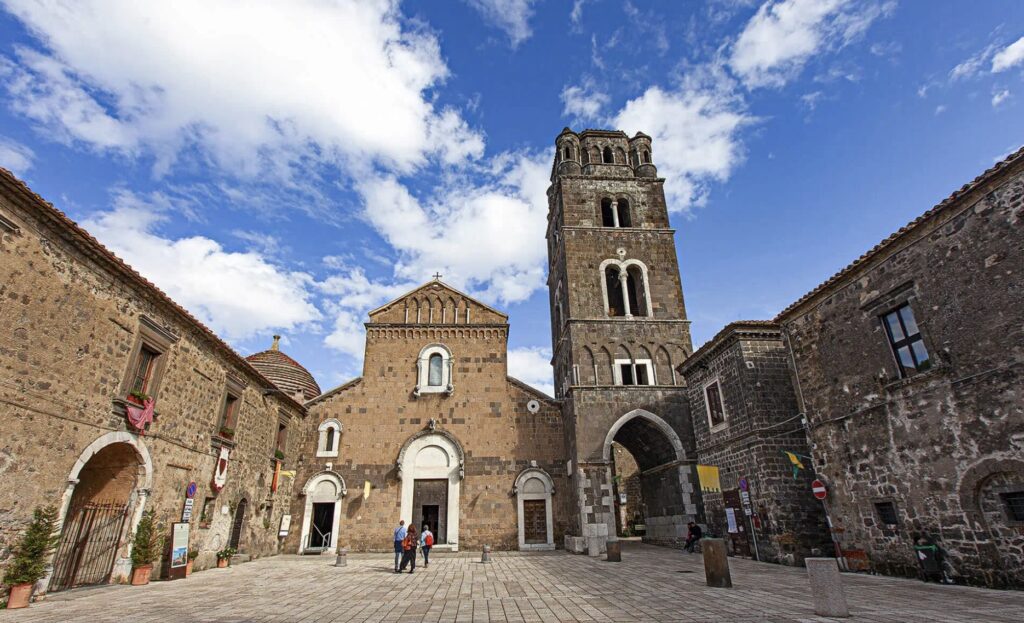
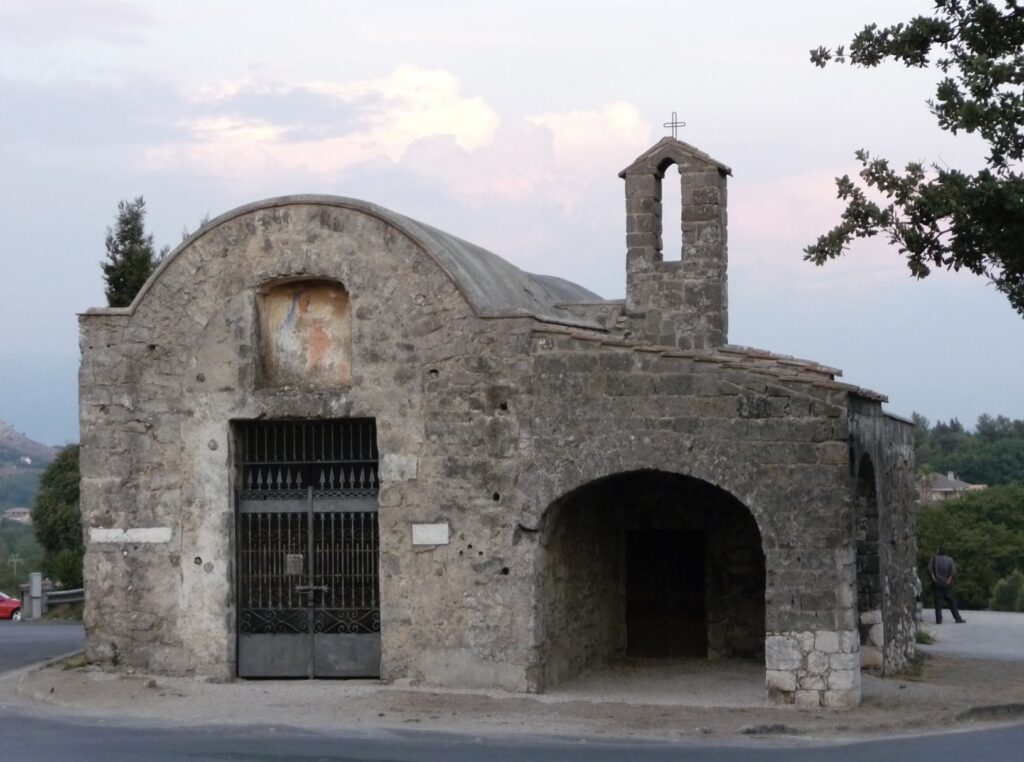
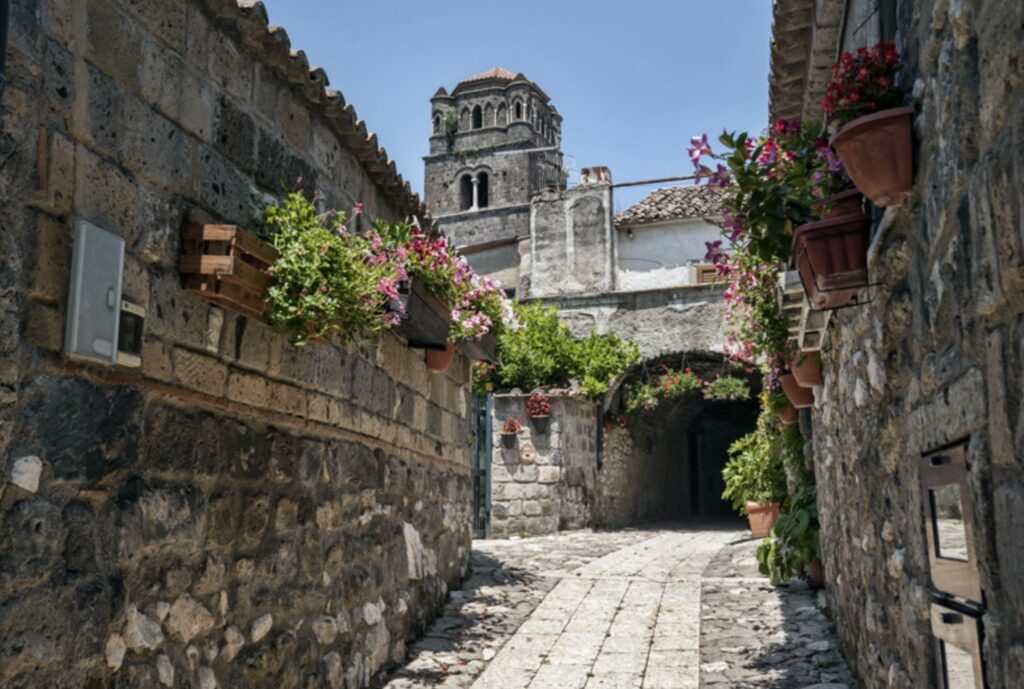
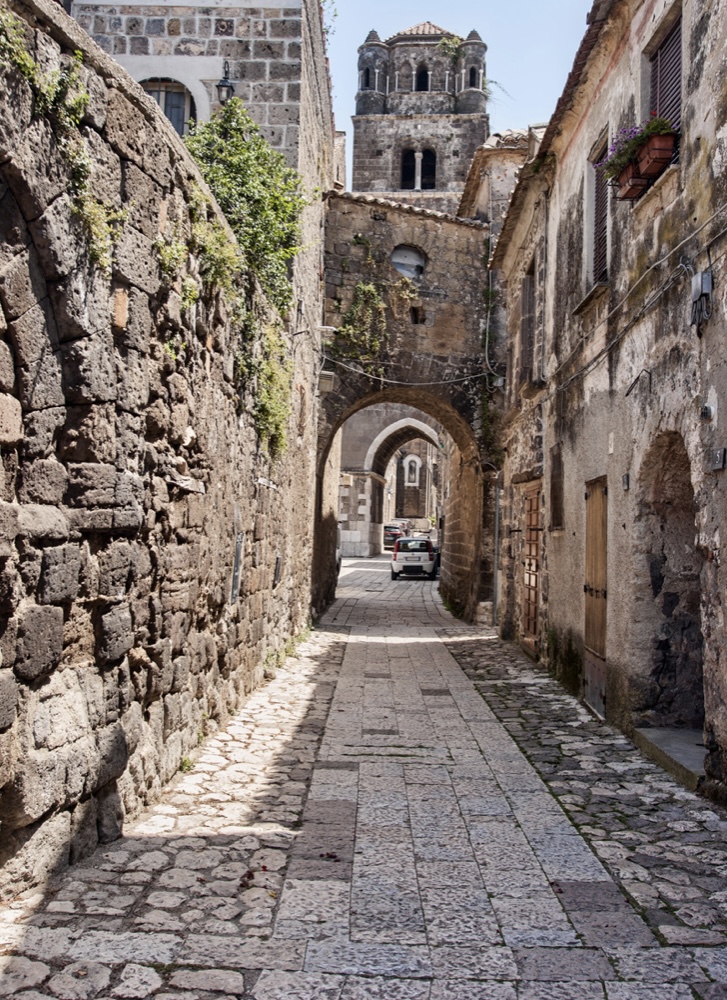
Here’s a suggested one-day itinerary for visiting Caserta, including the Royal Palace and Casertavecchia, while incorporating local food specialties:
Morning
9:00 AM – 12:00 PM: Royal Palace of Caserta
- 9:00 AM: Start your day at the Royal Palace of Caserta. Arrive early to beat the crowds and spend about 2-3 hours exploring the palace’s grand interiors, including the Grand Staircase, Throne Room, Palatine Chapel, and Royal Apartments.
- 10:30 AM: Take a leisurely stroll through the expansive gardens, visiting the Great Waterfall and the English Garden. Don’t forget to enjoy the fountains and sculptures along the way.
12:00 PM – 1:00 PM: Lunch at a Local Trattoria
- 12:00 PM: Head to a nearby trattoria for lunch. Try local specialties such as “mozzarella di bufala” (buffalo mozzarella), “parmigiana di melanzane” (eggplant parmesan), or “paccheri con ragù” (large pasta tubes with meat sauce). Pair your meal with a glass of local white wine, like Falanghina.
Afternoon
1:00 PM – 2:00 PM: Travel to Casertavecchia
- 1:00 PM: Take a short drive or taxi ride (about 20 minutes) to the medieval village of Casertavecchia, located on a hill overlooking Caserta.
2:00 PM – 5:00 PM: Explore Casertavecchia
- 2:00 PM: Begin your visit with the Cathedral of San Michele Arcangelo, exploring its Romanesque-Gothic architecture and medieval frescoes.
- 2:30 PM: Visit the ruins of the Castello di Casertavecchia and enjoy the panoramic views from its strategic location.
- 3:00 PM: Walk through the narrow, cobblestone streets of the village, stopping at the Church of Annunziata and the historic Bell Tower.
- 3:30 PM: Take a break at a local café in Piazza Vescovado, the main square, where you can enjoy a coffee or gelato.
- 4:00 PM: Visit some local craft shops to purchase unique souvenirs and traditional products.
Evening
5:00 PM – 7:00 PM: Dinner in Casertavecchia
- 5:00 PM: For dinner, choose a traditional restaurant in Casertavecchia. Enjoy dishes like “gnocchi alla Sorrentina” (gnocchi with tomato sauce and mozzarella), “pasta e fagioli” (pasta and beans), or a variety of wood-fired pizzas.
- 6:30 PM: Finish your meal with a traditional dessert, such as “sfogliatella” (a layered pastry filled with sweet ricotta) or “pastiera napoletana” (a ricotta and wheat berry pie).
7:00 PM: Return to Caserta
- 7:00 PM: Head back to Caserta, reflecting on a day well spent exploring the historical and cultural treasures of the region.
This itinerary ensures you experience the rich history, stunning architecture, and delectable cuisine of Caserta and Casertavecchia in one fulfilling day.
